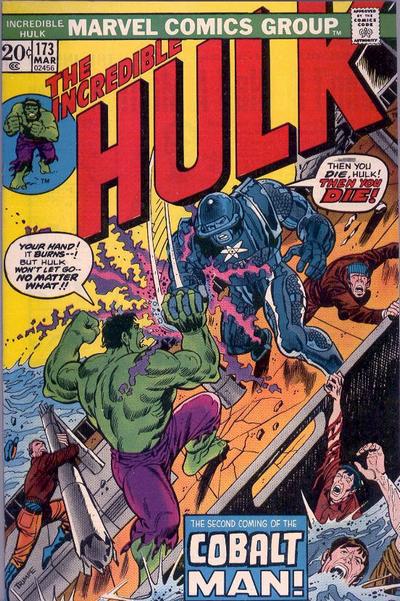 |
Herb Trimpe at East Coast Comicon,
just last weekend.
© Luigi Novi/Wikimedia Commons
|
As Patrick Reed on ComicsAlliance points out, Trimpe "was quick to correct anyone who credited him and Len Wein as creators of Wolverine, explaining that while they developed the character, the actual creation was handled by Roy Thomas and John Romita." Besides: As significant as Wolverine is, Trimpe's role in the character's history is minor and makes woefully inadequate boilerplate for a man whose career is nearly synonymous with the Marvel Age of Comics.
Herb Trimpe was a fixture in Marvel Comics when I was growing up — penciling nearly a hundred issues of The Incredible Hulk from 1968 until 1975 before moving on to every other super-hero in the Marvel stable and cornering the market on tie-ins to licensed properties. Trimpe brought the Shōgun Warriors to Marvel and gave the company's version of Godzilla a distinctive look that lies somewhere between Toho and a pot-bellied chameleon. In the 1980s, he worked on everything from The Transformers and G.I. Joe to Indiana Jones.
During the 1990s, Trimpe infamously reinvented his style. Gone were were the dynamic compositions with distinctively dull (to my kid eyes, at least), smooth, shadowless figures, replaced with grimacing, stippled musclemen — Trimpe's imitation of the Image-influenced style of the decade. The change was poorly received, and Trimpe, admittedly a bit naïve about the business end of comics at times, found himself in the crosshairs of ageism and bankruptcy cuts at Marvel Comics. After decades of being that rarest of creatures in the comics business, a salaried staff artist working at one of the Big Two, Trimpe found himself unceremoniously downsized in 1996, scrambling for freelance work that never amounted to a living in an industry imploding even faster than it had exploded at the beginning of the decade.
 |
| Jim rounded up his 10 favorite Trimpe Hulk covers back in 2013. Click here. |
Trimpe, however, couldn't wait around for the page to turn. He was a grown man with grown-man responsibilities, including children in college, and couldn't eke out a living on freelance projects. So he went back to school, got a teaching certificate, and shook the dust of the comics industry off his boots for a few years as he began mentoring a new generation of illustrators.
In 2000, he wrote a seminal piece for The New York Times on ageism in comics — one that's woefully underlinked when we talk about the issue today. In it, he shares selections from his unemployment journal detailing the trepidation and promise of embarking on a new career late in life. (Trimpe was 56 when Marvel terminated his contract.)
Articles would occasionally show up in the mainstream about Trimpe's teaching career, sometimes in relation to economic woes like the bursting of the dot-com bubble, sometimes as feel-good stories about getting a second act in life. Within a couple of years, he started showing up on the trade-show circuit, sketching in artists' alleys and gabbing about his incomparable history with Marvel. By all accounts, he had stories about nearly every title he'd worked on or creator he'd collaborated with — all of them unfailingly professional and courteous. He was a time capsule of information on the most contentious periods of Marvel history, from Stan Lee handing over the reigns in the '70s to the musical chairs of editorship-in-chief to the reign of Emperor Shooter to the boom and bust and bankruptcy.
My first thought on reading the news of Herb Trimpe's passing was, "Thank God he lived long enough to enjoy a bit of reevaluation and appreciation." The internet was only now beginning to appreciate how prolific and professional Trimpe had been during his heyday, and his second career as an educator and elder statesman on the con circuit lent even more weight to the growing admiration of readers who entered the hallowed halls of Marvel fandom only after Trimpe had cleaned out his desk.
If you'd like to remember Trimpe's influence with a gift, his family has recommended contributing to the Kerhonkson Accord First Aid Squad, whose good work in the community you can imagine, or Hero Initiative, which helps many aging comics creators in times of need.
 |
| Trimpe's clean composition, Barry Windsor Smith's lush inks. Neither artist ever looked better than in the Machine Man mini-series. @ Amazon |

2 comments:
It's nice that he spent his last weekend surrounded by those who loved his work, knowing that his contributions to Marvel were appreciated by the fans. Small consolation to his family, I know, but better than the fate of some.
Amen.
I'm glad Trimpe lived to see some of the reevaluation he so richly deserved — and long enough for me (personally) to become a fan. I didn't much care for Trimpe as a kid, but I was lucky enough to work alongside people who did and to hear them speak eloquently about the power of his work.
Post a Comment